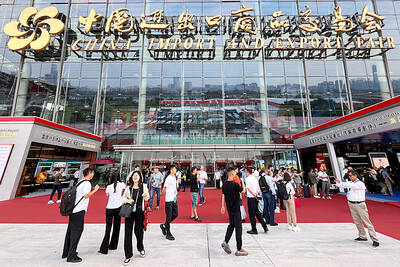Modern civilization and development depend on sufficient energy supply. We need it for lighting, heating, cooling and mobility. Unfortunately the production of energy is increasingly recognized as a major source of environmental problems.
How to satisfy the growing energy demands in an environmentally safe and economically sound manner is of global concern. The utilization of renewable energy sources may prove to be a solution to overcome this challenge.
Unfortunately the costs to produce renewable energy are perceived as generally higher than those for fossil fuels. This has lead to limited use of renewable sources in the global energy market.
However, the cost differential between renewable energy and fossil and nuclear energy has been exacerbated by long-term support provided by governments in the form of direct or indirect subsidies.
Since the beginning of the nineties, Germany has been a leader in renewable energies, in both science and legislation.
The legal framework, the Renewable Energy Act implemented in April 2000, regulates take-off obligations and fixed price agreements. Since 1998 Germanys renewable energy production has grown steadily from 5.2 % to 8 % in 2002. The projected goal is 14 % by 2010.
The utilisation of wind energy in Germany is booming. Up to 15,000 wind energy plants are installed in the country. Long term plans, by 2030, forecast possible power generation from land and sea wind parks will account for 25% of the total energy needs in Germany. The next steps in technological development are happening now with the introduction of off-shore wind turbines with a capacity of 5 MW.
The development of photovoltaic systems is also very advanced in Germany. Just two weeks ago the world's largest solar power plant (5 MWp) opened in Leibzig, covering over 20 hectares of a former landfill. Germany is the largest producer of solar cells in Europe, and worldwide, is second only to Japan. This year the German PV market is growing at a rate of 50%.
German energy offers high potential for future energy generation. Scientists estimate that up to 60% of Germany power supply may be generated from geo-thermal energy.
Another major source of CO2 pollution and energy consumption is transport. Worldwide car manufacturers are researching new technologies. Low pollution and low fuel consumption are important features for today's customers.
But the ultimate response to calls for "'zero emissions" will be fuel cell powered cars generating electricity from hydrogen and oxygen. What seems like science fiction is fast becoming reality: In 2004 DaimlerChrysler is putting 60 fuel cell A-class cars on streets worldwide for prolonged, everyday testing. In this way DaimlerChrysler is demonstrating technological leadership in the field of sustainable mobility.
To promote the development of renewable energy abroad the "Export-Initiative Renewable Energy", was implemented by the German government in 2002. Moreover the German government arranged a world conference in 2004: RENEWABLES 2004, which showcased the latest developments in this field.
Because of German government initiatives and Taiwan's increasing awareness of environmental policy, the German Trade Office Taipei actively promotes the application of renewable energies in Taiwan. The result was a two-day-symposium "Renewable Energies -- Technology for a Sustainable Tomorrow" in May this year. German experts in the fields of politics, science and economy shared their experiences and latest developments to an interested Taiwanese audience.
The German Trade Office Taipei will continue to promote business and research cooperation in the field of renewable energy with technical seminars, trade delegations and case-by-case consulting for German technology companies.

SECURITY: As China is ‘reshaping’ Hong Kong’s population, Taiwan must raise the eligibility threshold for applications from Hong Kongers, Chiu Chui-cheng said When Hong Kong and Macau citizens apply for residency in Taiwan, it would be under a new category that includes a “national security observation period,” Mainland Affairs Council (MAC) Minister Chiu Chui-cheng (邱垂正) said yesterday. President William Lai (賴清德) on March 13 announced 17 strategies to counter China’s aggression toward Taiwan, including incorporating national security considerations into the review process for residency applications from Hong Kong and Macau citizens. The situation in Hong Kong is constantly changing, Chiu said to media yesterday on the sidelines of the Taipei Technology Run hosted by the Taipei Neihu Technology Park Development Association. With

CARROT AND STICK: While unrelenting in its military threats, China attracted nearly 40,000 Taiwanese to over 400 business events last year Nearly 40,000 Taiwanese last year joined industry events in China, such as conferences and trade fairs, supported by the Chinese government, a study showed yesterday, as Beijing ramps up a charm offensive toward Taipei alongside military pressure. China has long taken a carrot-and-stick approach to Taiwan, threatening it with the prospect of military action while reaching out to those it believes are amenable to Beijing’s point of view. Taiwanese security officials are wary of what they see as Beijing’s influence campaigns to sway public opinion after Taipei and Beijing gradually resumed travel links halted by the COVID-19 pandemic, but the scale of

A US Marine Corps regiment equipped with Naval Strike Missiles (NSM) is set to participate in the upcoming Balikatan 25 exercise in the Luzon Strait, marking the system’s first-ever deployment in the Philippines. US and Philippine officials have separately confirmed that the Navy Marine Expeditionary Ship Interdiction System (NMESIS) — the mobile launch platform for the Naval Strike Missile — would take part in the joint exercise. The missiles are being deployed to “a strategic first island chain chokepoint” in the waters between Taiwan proper and the Philippines, US-based Naval News reported. “The Luzon Strait and Bashi Channel represent a critical access

Pope Francis is be laid to rest on Saturday after lying in state for three days in St Peter’s Basilica, where the faithful are expected to flock to pay their respects to history’s first Latin American pontiff. The cardinals met yesterday in the Vatican’s synod hall to chart the next steps before a conclave begins to choose Francis’ successor, as condolences poured in from around the world. According to current norms, the conclave must begin between May 5 and 10. The cardinals set the funeral for Saturday at 10am in St Peter’s Square, to be celebrated by the dean of the College